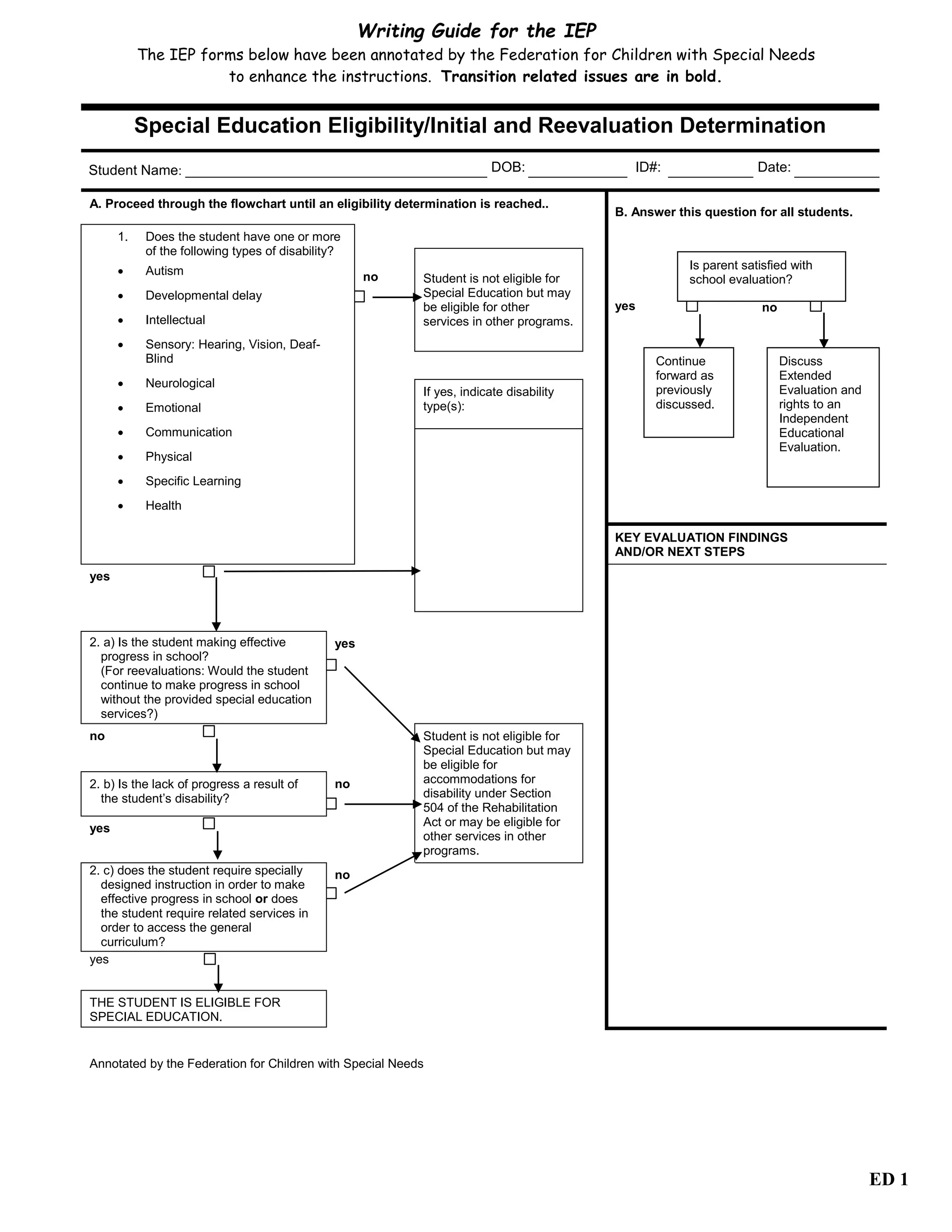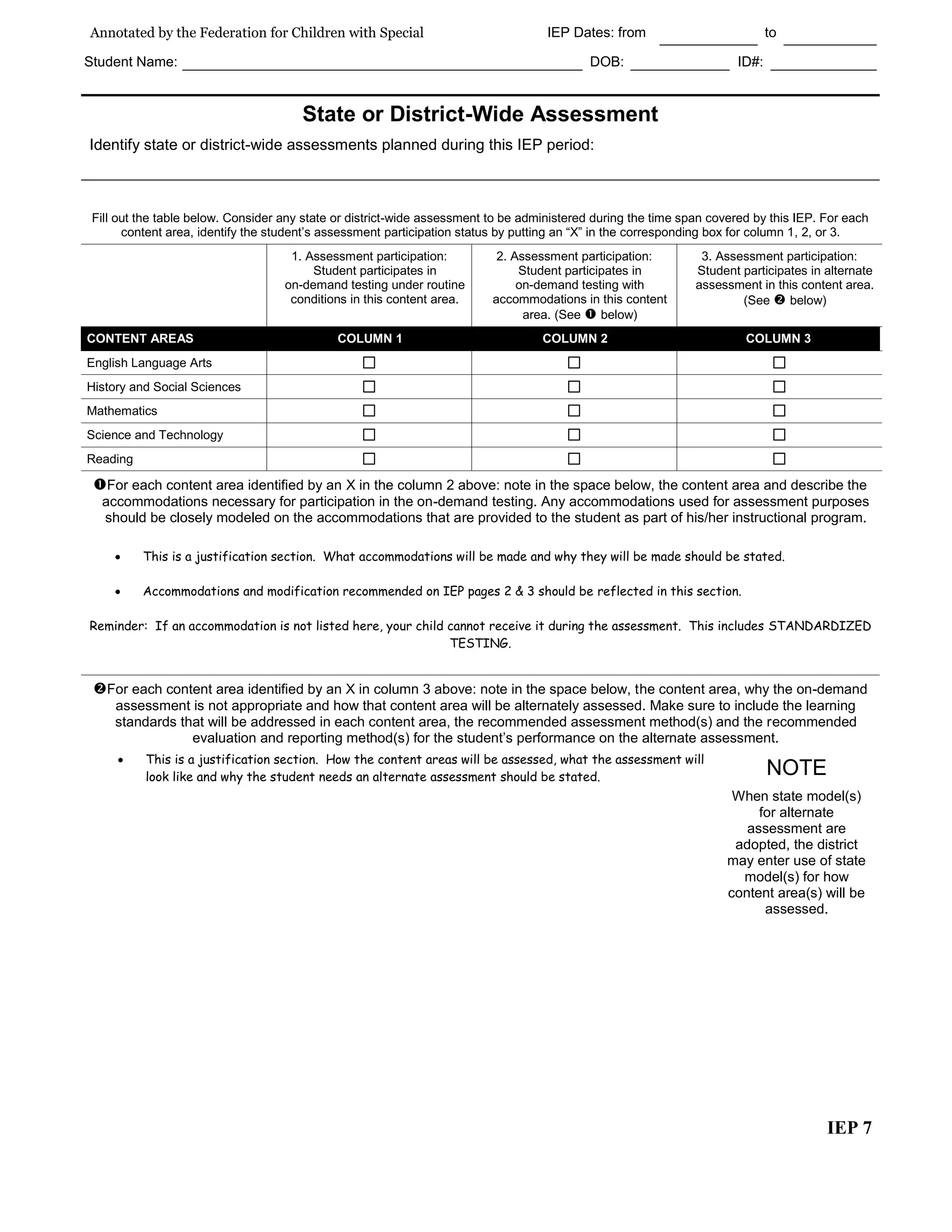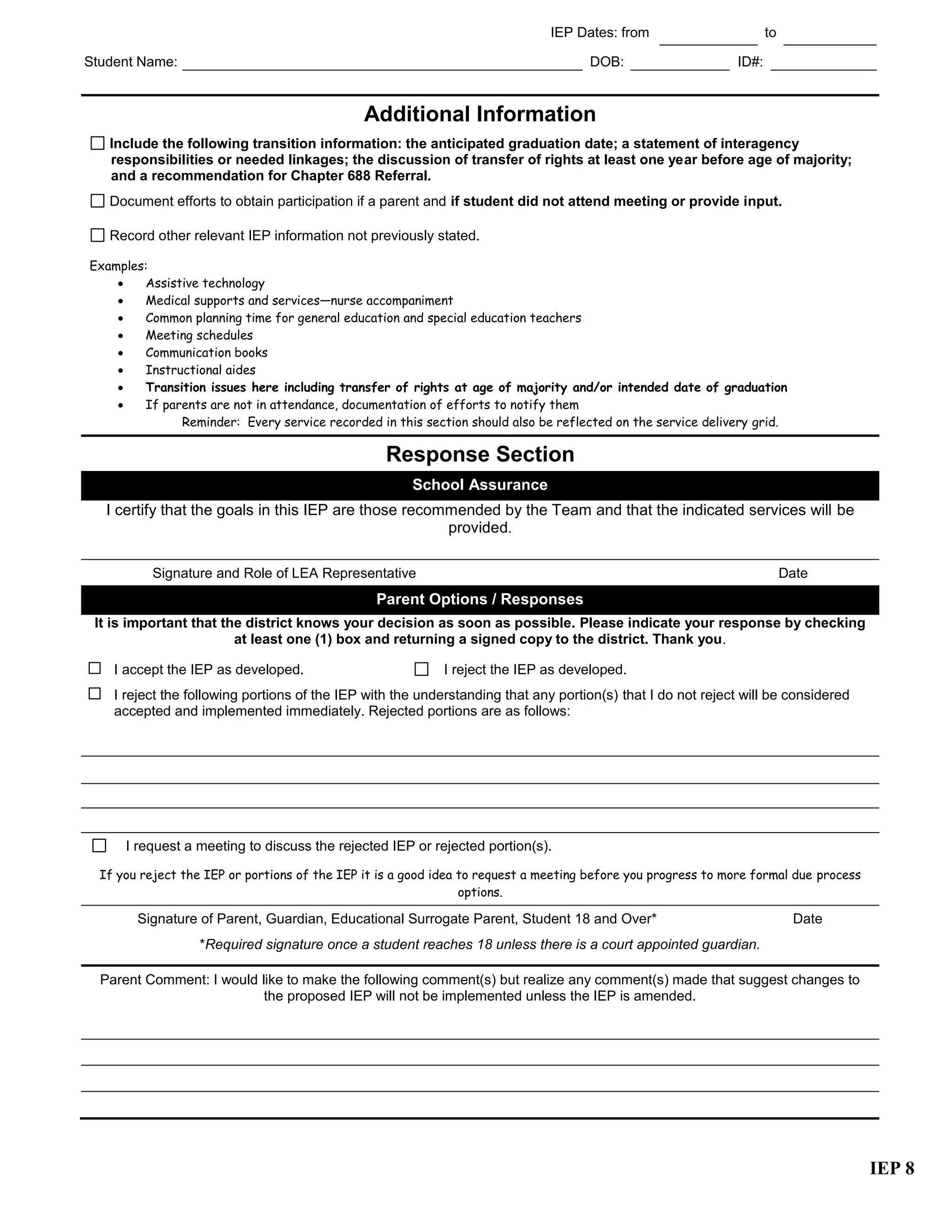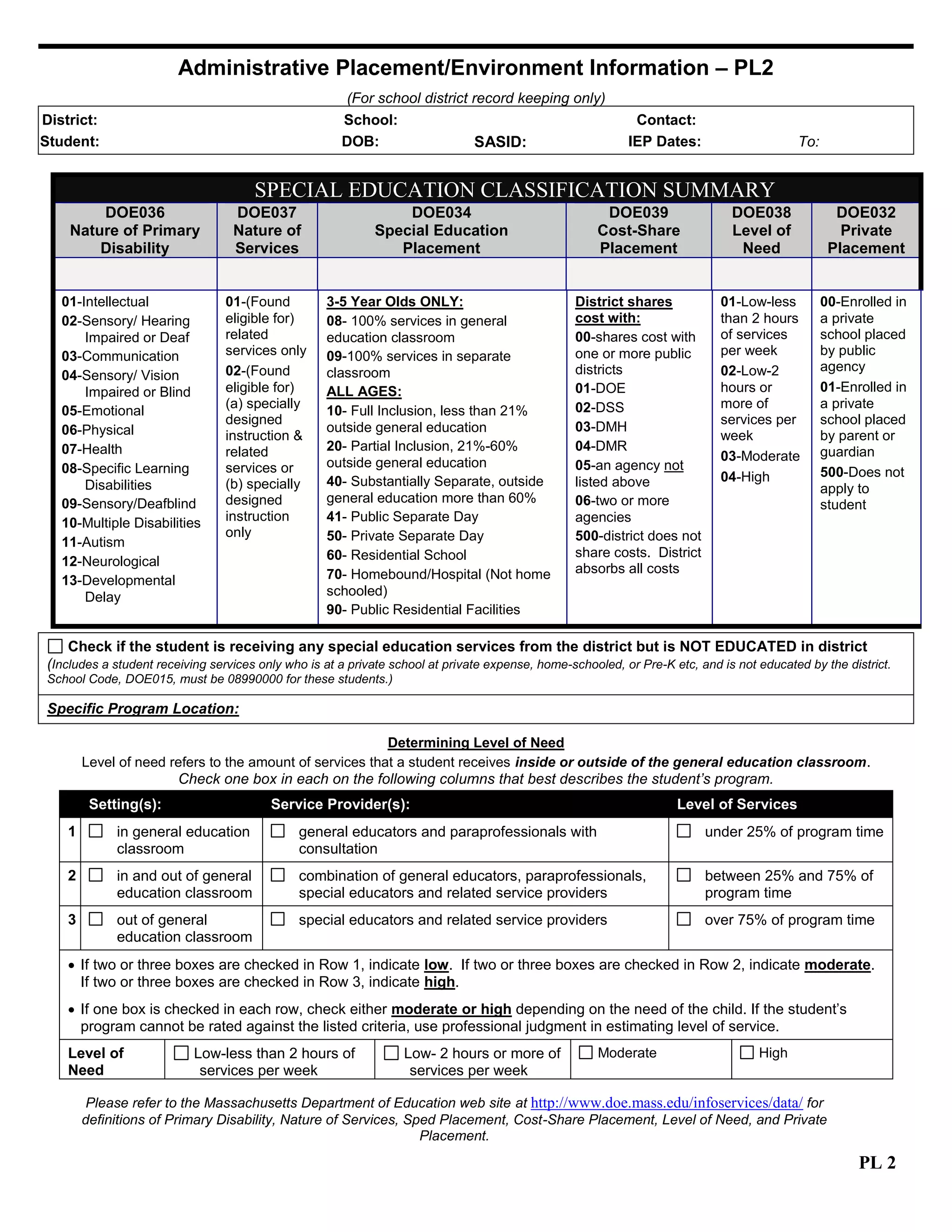The document serves as a comprehensive writing guide for developing Individualized Education Programs (IEPs) for students with disabilities, detailing eligibility determination processes, key components such as transition planning, student strengths, and necessary accommodations. It emphasizes the importance of parental input, the student's vision for their future, and the need for collaboration among educators, parents, and the students themselves during the IEP process. Additionally, it outlines specific measurable goals, service delivery needs, and considerations for ensuring students can access the general curriculum effectively.











